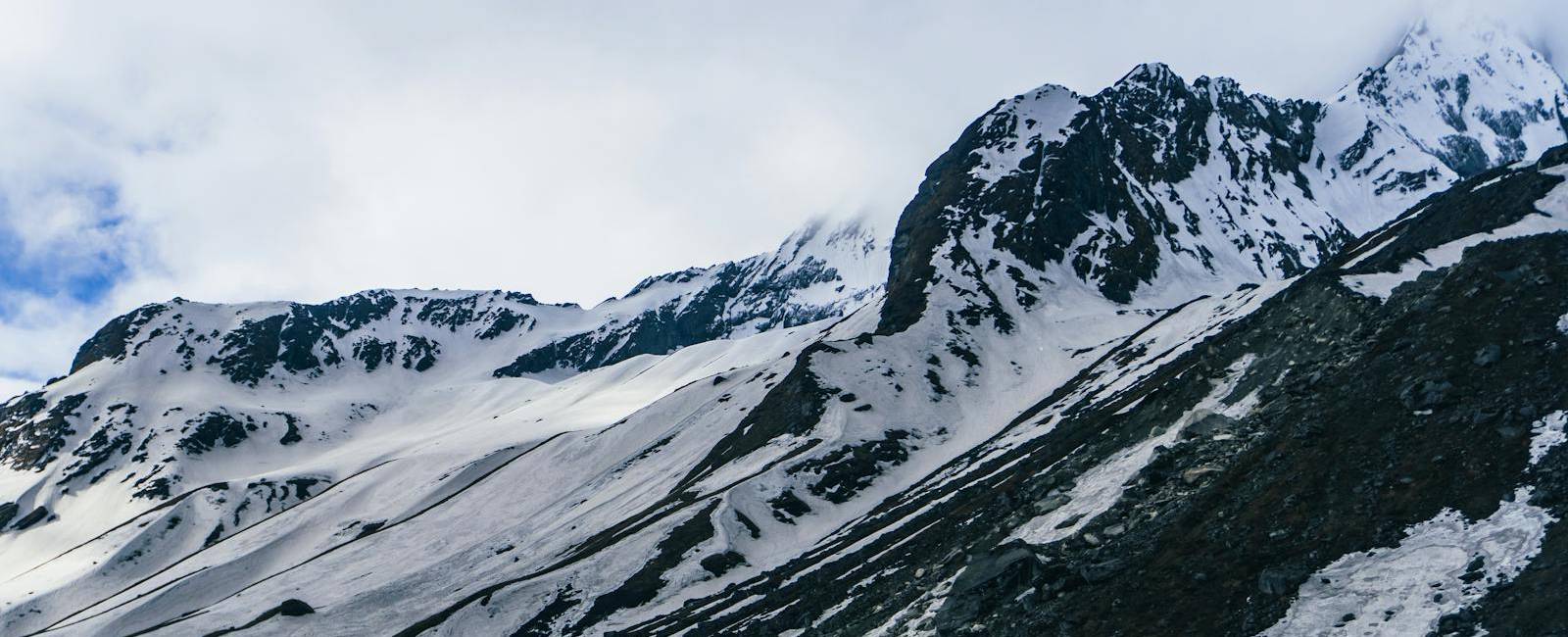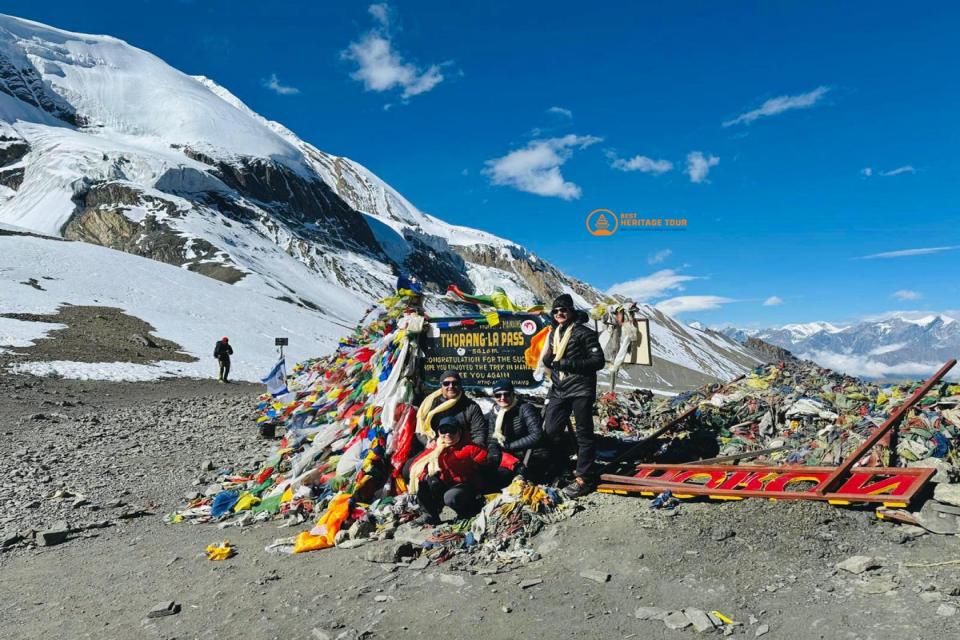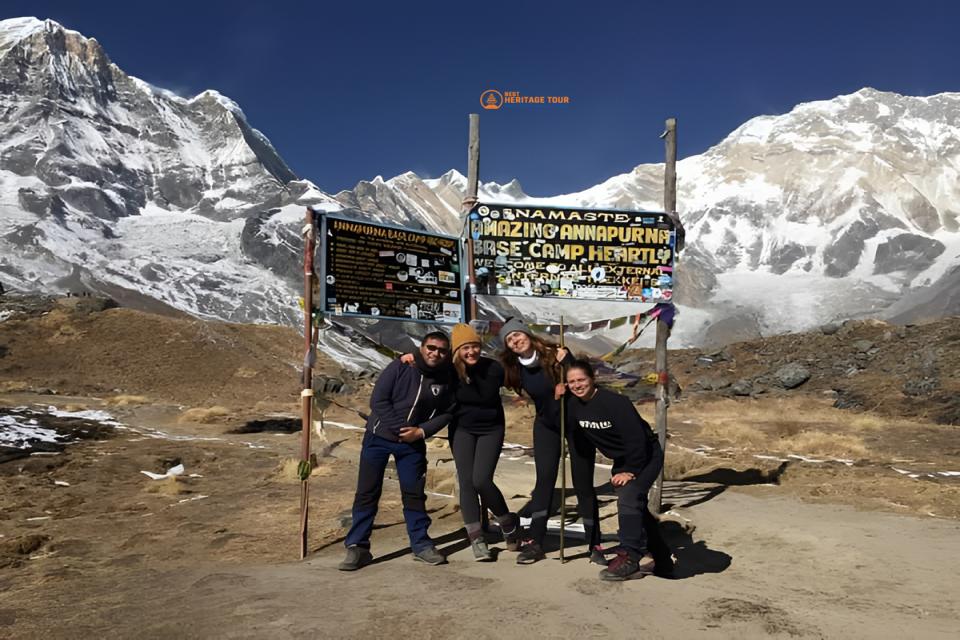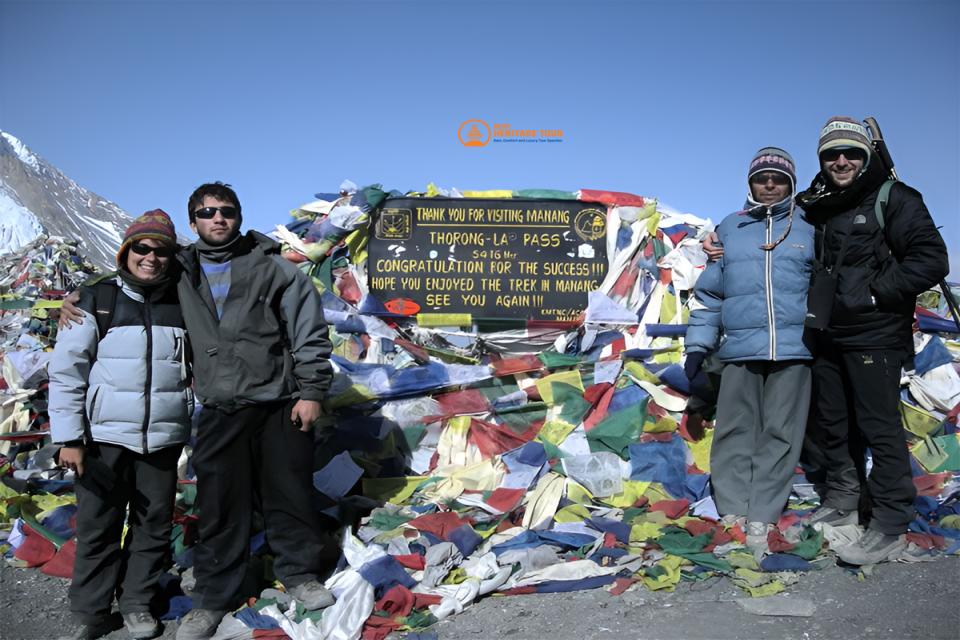The Annapurna Circuit Short Trek offers one of the most rewarding trekking experiences in Nepal, condensing the classic longer route into a thrilling, accessible adventure. Traversing through lush valleys, alpine forests, traditional villages, and over the iconic Thorong La Pass (5,416 meters/17,769 feet), the trek presents dramatic altitude variations and weather changes. Packing the right gear is crucial to ensure comfort, safety, and successful acclimatization at high elevations.
Whether you're crossing windswept passes or soaking in the diverse landscapes of the Annapurna region, this expert packing guide will help you be fully prepared for every challenge along the trail.
Here’s your complete Annapurna Circuit Short Trek gear checklist, organized body-part-wise with detailed recommendations for each essential item.
1. Upper Body Clothing
Layering is essential on the Annapurna Circuit Short Trek, as temperatures can vary drastically from tropical warmth to icy cold:
-
Moisture-Wicking Base Layers (2–3) – Essential for managing sweat and maintaining core warmth during long trekking days.
-
Insulating Fleece Jacket or Softshell (1) – Provides crucial warmth in the higher altitudes and chilly mornings.
-
Packable Down Jacket (1) – Lightweight yet warm; critical for Thorong La Pass crossings and high-altitude overnight stays.
-
Waterproof and Windproof Shell Jacket (1) – Protects against Himalayan snow showers, rain, and strong mountain winds.
-
Quick-Dry Trekking Shirts (2–3) – Breathable shirts ideal for trekking in varying temperatures.
-
Thermal Pullover or Hoodie (1) – Extra insulation for cold evenings and mornings above 3,000 meters.
2. Lower Body Clothing
The lower Annapurna region can be warm, while higher regions near Thorong La can be freezing:
-
Lightweight Trekking Pants (2 pairs) – Convertible pants are ideal for adapting to temperature changes quickly.
-
Thermal Leggings (1–2 pairs) – Vital for colder sections and high passes.
-
Waterproof Overpants (1 pair) – For rain or snow protection, especially near Thorong La.
-
Breathable Underwear (3–4 pairs) – Quick-drying underwear prevents chafing and keeps you comfortable on long days.
3. Head and Hand Gear
Proper protection from sun, wind, and cold is essential:
-
Sun Hat or Cap (1) – Shields against harsh UV exposure at lower altitudes.
-
Warm Woolen Hat or Beanie (1) – Keeps you warm in the evenings and at high altitudes.
-
Neck Gaiter or Buff (1) – Multi-purpose protection against cold, dust, and sun.
-
UV-Protective Sunglasses (1) – Critical for shielding your eyes from snow glare, especially near Thorong La.
-
Headlamp (with extra batteries) – Essential for early morning starts or teahouse lighting.
-
Fleece Gloves (1 pair) – Light insulation for trekking days.
-
Insulated Waterproof Gloves (Optional) – Highly recommended for the colder high-altitude crossing days.
4. Footwear and Socks
Given the rugged, rocky terrain, proper footwear is non-negotiable:
-
Sturdy Waterproof Hiking Boots (1 pair) – Well-broken-in boots with ankle support are critical for success.
-
Camp Shoes or Sandals (1 pair) – Perfect for relaxing in teahouses after a day's trek.
-
Wool Trekking Socks (3–4 pairs) – Cushioned, breathable socks to keep your feet warm and dry.
-
Sock Liners (Optional) – Help reduce friction and prevent blisters during long trekking days.
5. Bags and Trekking Essentials
Packing smartly ensures you’re prepared without being weighed down:
-
Backpack (40–50L) – Comfortable and supportive pack with rain cover; large enough to carry layers, sleeping bag, and daily essentials.
-
Daypack (15–25L) – Perfect for carrying snacks, camera, and water if you have a porter.
-
Rain Cover (for Backpack) – Protects your gear from sudden Himalayan downpours.
-
Trekking Poles (1 pair) – Crucial for balance and reducing strain during steep ascents and descents.
-
Water Bottles / Hydration System (2L) – Staying hydrated is key, especially at altitude.
-
Water Purification Tablets / Filter Bottle (1) – Ensure access to clean drinking water on the trek.
-
Sleeping Bag (-10°C to -15°C rated) – Essential for cold nights, especially above 3,500 meters.
-
Quick-Dry Towel (1) – Handy for teahouse stays and freshening up.
6. Toiletries and Personal Hygiene
Maintaining hygiene in remote areas boosts your comfort and health:
-
Toilet Paper / Tissues (1 roll) – Often unavailable along the trail, so bring your own.
-
Wet Wipes / Hand Sanitizer (1) – Essential for hygiene where water is scarce.
-
Biodegradable Soap / Shampoo (1) – Respect the fragile mountain environment.
-
Toothbrush & Toothpaste (1 set)
-
Sunscreen (SPF 30+) – High UV exposure at altitude demands strong protection.
-
Lip Balm with SPF (1) – Prevents painful cracked lips in cold and dry conditions.
-
Menstrual Products (if applicable)
7. Health, Safety, and Electronics
Prepare for emergencies and enjoy capturing every memory:
-
Basic First Aid Kit (1) – Include essentials like Diamox (for altitude sickness), painkillers, antiseptic cream, and blister treatment.
-
Bug Spray (1) – Useful in lower forested areas like Dharapani.
-
Power Bank / Solar Charger (1) – Electricity can be unreliable in remote areas.
-
Camera / Smartphone (1) – Capture the stunning Annapurna landscapes.
-
Offline Maps App / Trekking Maps (1) – Critical for navigation and route planning.
-
Travel Insurance (1) – Must include helicopter evacuation and high-altitude trekking coverage.
8. Documents and Money
Keep important documents protected and accessible:
-
Passport (with 2 copies) – Required for permits and checkpoints.
-
Annapurna Conservation Area Permit (ACAP) and TIMS Card (1 each) – Mandatory trekking permits.
-
Passport-Sized Photos (2) – Needed for permit applications.
-
Travel Insurance Certificate (1) – Proof of insurance is often needed for emergencies.
-
Cash (Nepali Rupees) – Limited ATMs along the trail, especially beyond Chame.
Optional Extras (But Useful)
These additional items can significantly improve your comfort and experience:
-
Energy Bars / Trail Mix / Electrolytes – Great for energy boosts on long trekking days.
-
Notebook and Pen – Perfect for journaling your Annapurna adventure.
-
Small Lock – Useful for securing your backpack in lodges or teahouses.
-
Earplugs and Eye Mask – Essential for restful sleep in communal or noisy lodges.
-
Lightweight Gaiters – Useful if trekking in snowy or muddy conditions.
Final Tips for a Successful Annapurna Circuit Short Trek
-
Pack Light but Smart – Multi-functional gear will reduce your load without compromising on essentials.
-
Break in Your Hiking Boots – Avoid painful blisters by using boots that are well-worn and comfortable.
-
Layer Smartly – Be ready for fast-changing weather by dressing in layers.
-
Acclimatize Properly – Ascend slowly and drink plenty of fluids to avoid altitude sickness.
-
Respect Local Culture and Environment – Practice responsible trekking and embrace the rich culture of the Annapurna region.
Gear Up for the Annapurna Circuit Short Trek: Adventure Awaits!
The Annapurna Circuit Short Trek offers breathtaking diversity, from lush valleys to dramatic high-altitude crossings. With the right preparation and proper packing, you’ll be set for an unforgettable Himalayan adventure. Use this ultimate packing guide to tackle the trail with confidence, comfort, and peace of mind!





